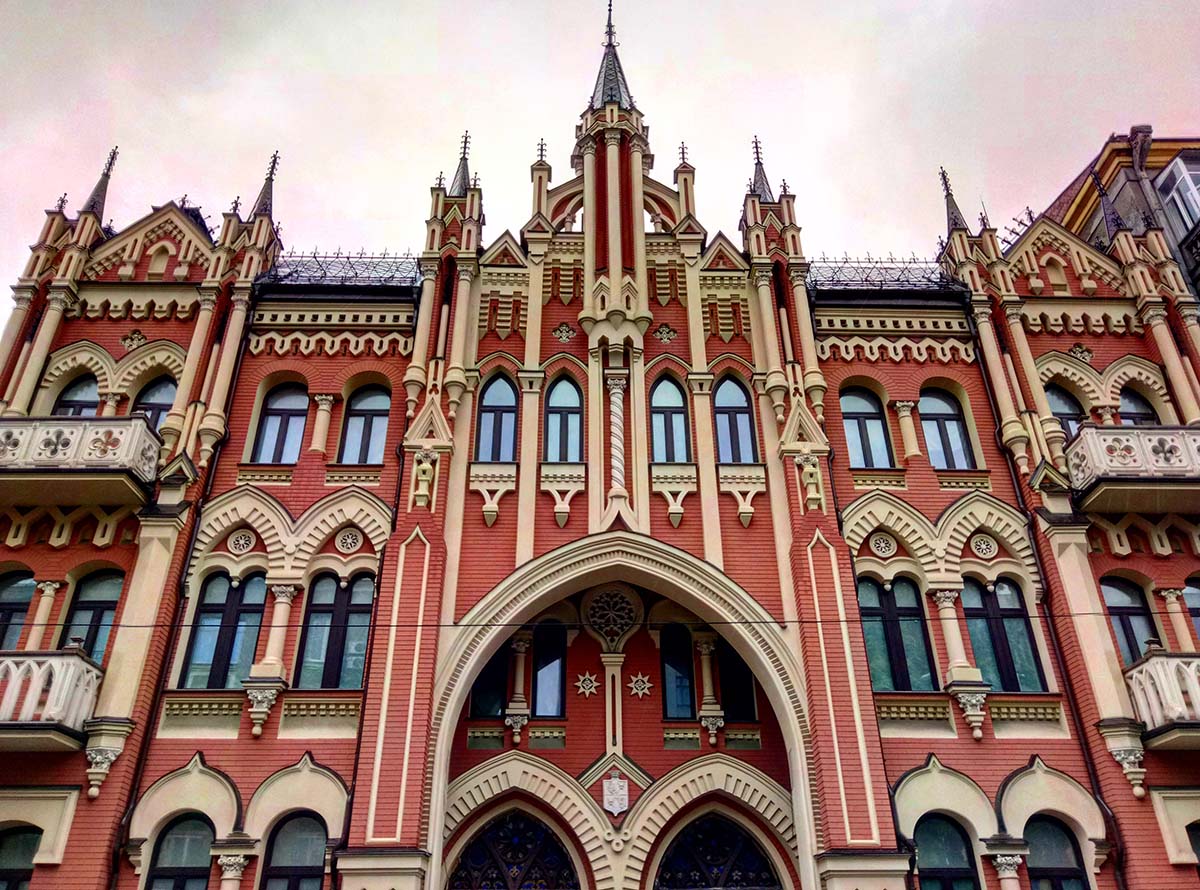The building was built in 1902 in the neo-Gothic style according to the design of engineer Nikolai Vishnevsky. Belonged to the family of barons Uexküll-Gildenband (an ancient German family originating from the Archbishopric of Bremen). The house is three-story. The front façade is symmetrical and richly covered with various decorative elements, reminiscent of a fairy-tale “gingerbread house”. To decorate the front façade, the architect used almost all the elements characteristic of the Gothic style: pointed turrets, suspended columns with floral capitals, flying buttresses, lancet and semicircular windows and the front entrance portal borrowed from English Gothic. This whole Gothic masquerade, as expected for buildings in the historicist style, was dressed up on the modern structure of the house and in most cases was intended to decorate the front facade. The gingerbread house of Baron Uexküll-Gildenband, even for houses of the historicism style, is overly overloaded with decorative forms, and, where possible, decorative elements are emphasized and separated from the body of the house with white paint. As a result, the house does not give the viewer the impression of a majestic castle (which is typical for such buildings), but resembles a fairy-tale decoration, and therefore is perceived with a smile. The house consisted of six 5-7-room apartments, some of which were rented out. The rental price ranged from 100 to 130 rubles per month. In the courtyard there were stables and carriage houses, in the basement there was a laundry and individual cellars with wood storage for each apartment. The apartments were heated with terracotta fireplaces.
During the Soviet era, the building was nationalized and converted into a communal apartment, and even later into an apartment building. Academicians lived here – poet and literary critic Nikolai Bazhan, economist Pavel Pershin. In 1943, the house burned and was restored in 1944-45 by prisoners of war. By the end of the 20th century, the building arrived in a damaged state – of the 7 Gothic spiers that adorned it, only 1 survived. In the 2000s, a major renovation was carried out with private money. Today, the building has been restored to its original appearance. Nowadays a private company is located there. In 2016, the outbuildings were reconstructed. Nearby there are no less beautiful and famous buildings such as Kovalevsky’s mansion and Mogilevtsev’s mansion (“chocolate house”).
Where is the house of Uexküll-Hildenband?
Shelkovichnaya street, 19
